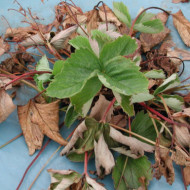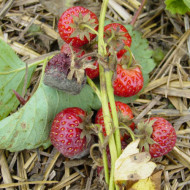Features of growing the popular industrial variety of strawberries Honey
Content
Breeding history and regional affiliation
The homeland of the plant is the American city of Honeoye, after which the variety was named. The strawberry in question is also known as Hanoi. The hybrid was bred in 1979 by crossing Holiday and Vibrant varieties.
The culture is resistant to low temperatures. That is why it is recommended to grow it in central Russia. In regions with arid climatic conditions, Khonei will not take root. This is due to the intolerance of strawberry water shortage.
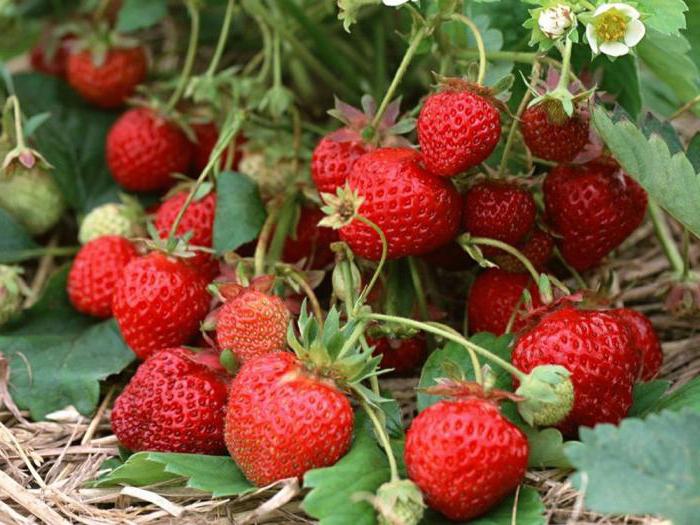
Characteristics of the Honey Strawberry
The hybrid variety is famous for its large and high-quality fruits. In addition, the variety tolerates frost and wind.
Description of the bushes
The culture is characterized by strong shrubs that grow up to 30 cm in height. The root system of berry bushes is powerful and branched. The plant is densely covered with rich green leaves with barely noticeable pubescence. Shrubs bloom profusely, forming many peduncles.
Flowering features
The variety belongs to the early ripening category. Already in early May, the culture forms the first flower stalks with many buds. At least 12 flowers are formed on one shrub. The most active flowering occurs in mid-spring and lasts about 14-17 days.
Fruiting and productivity
The first berries ripen in mid-May. Abundant fruiting occurs, as a rule, in early June. A significant advantage of the culture is the uniform ripening of the berries. This greatly facilitates the harvesting process. Mass ripening continues for a month, after which only single fruits remain on the bushes. During the fruiting period, the yield from each bush is approximately 0.5 kg.
Description of fruits
The description of the fruit is similar to that of other hybrids. Ripe berries have the shape of a cone, reaching 20–30 g in size. The color of the fruit is deep red and has a characteristic shine. Honey strawberry is famous for its bright aroma and juicy dense pulp. The taste of berries is sweet and sour, slightly winey.
Many gardeners fell in love with strawberries not only for the taste of the fruit, but also for their nutritional value. The berries contain vitamin C, sugar, organic acids.
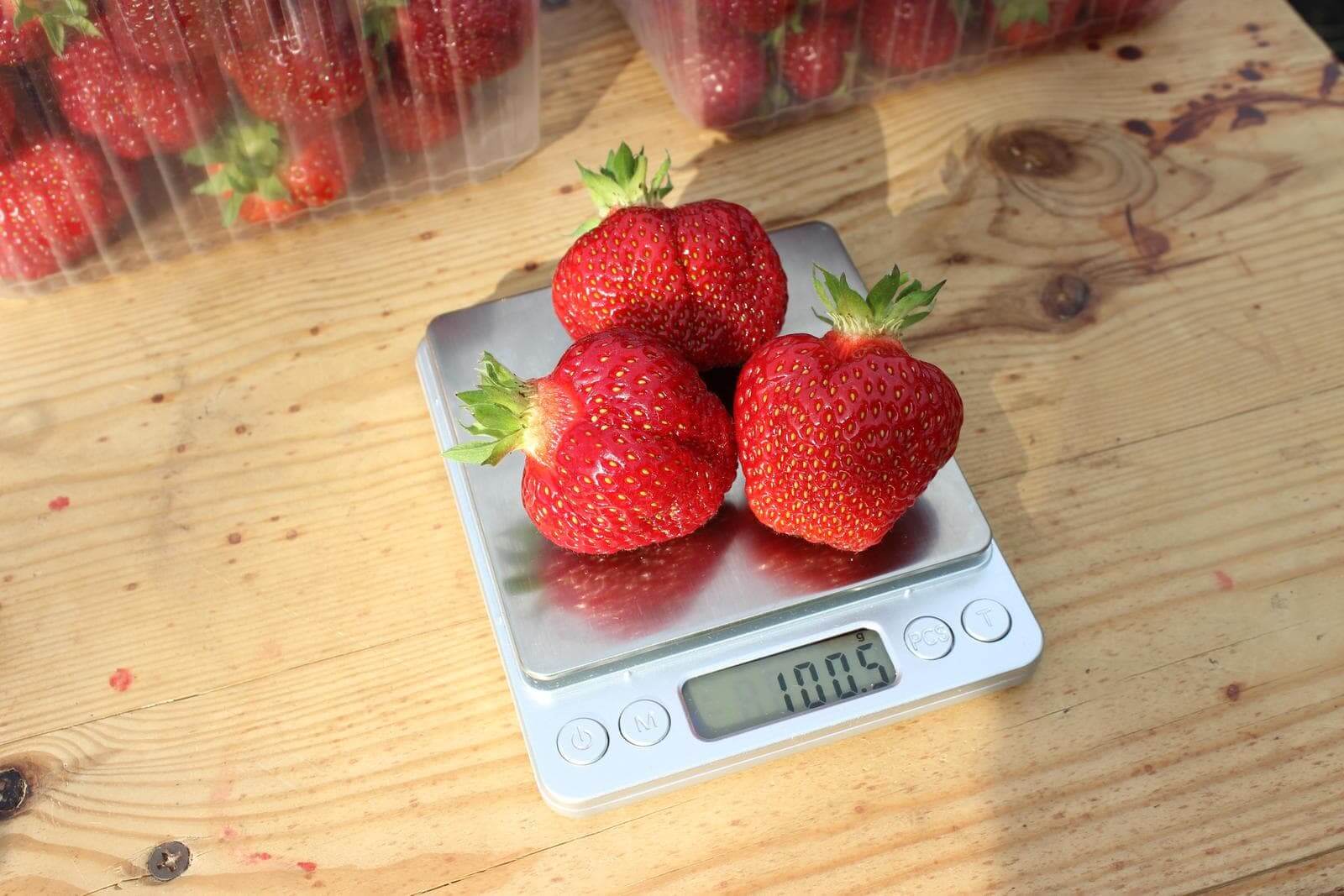
Storage, transportability and application
The berries retain their presentation for 3-4 days. After this time, the berry darkens and becomes soft. The fruits of the variety tolerate transportation well, without caking during transportation.
Strawberries are consumed fresh, as they have many useful properties.In addition, the berry is actively canned for the winter in the form of preserves, jams, compotes, juices. Often, housewives prefer to freeze the berry. This must be done immediately after harvest.
Resistant to weather conditions
The hybrid variety has high resistance to adverse environmental factors, which are manifested in the following:
- lowering the temperature to -20 ° C;
- thaw;
- summer dry weather;
- high humidity.
A strong root system of the culture ensures a quick recovery of a plant that has been negatively affected by frost.
Advantages and disadvantages of the variety
The hybrid variety is very popular among gardeners.
- early ripening;
- resistance to adverse weather conditions;
- high commodity indicators of berries;
- immunity to many fungal diseases.
- short storage period for fruits;
- culture intolerance to dry weather and excessive soil moisture.
Video "Growing Strawberry Honey"
This video tells about the prospects for growing the Khonei variety.
Growing strawberries outdoors
The variety is characterized by a strong root system, which makes the culture resistant to various negative factors. However, the plant still needs to comply with the fundamentally important conditions of planting and growing.
Benefits of autumn planting
Store-bought seedlings should be planted in mid-April. Over the summer, the planting material will take root and will give the first harvest next year.
Saplings that have grown from the whiskers of garden strawberries are recommended to be planted in the fall before the onset of frost. During this time, the seedlings will take root and by the end of spring they will please with a bountiful harvest.
Requirements for planting material
When starting to plant strawberries, you should select high-quality planting material. The main selection criteria are:
- absence of spots, rot and mold on the leaves of seedlings;
- strong root system.
If the roots are too long, it is necessary to shorten them a little.
Landing scheme
The strawberry planting scheme is to comply with the following rules:
- an interval of 60 cm between rows and 30 cm between seedlings;
- the depth of the hole is 20 cm, and its diameter is 25 cm;
- the location of the plant in the center of the hole, filling the soil, light watering.
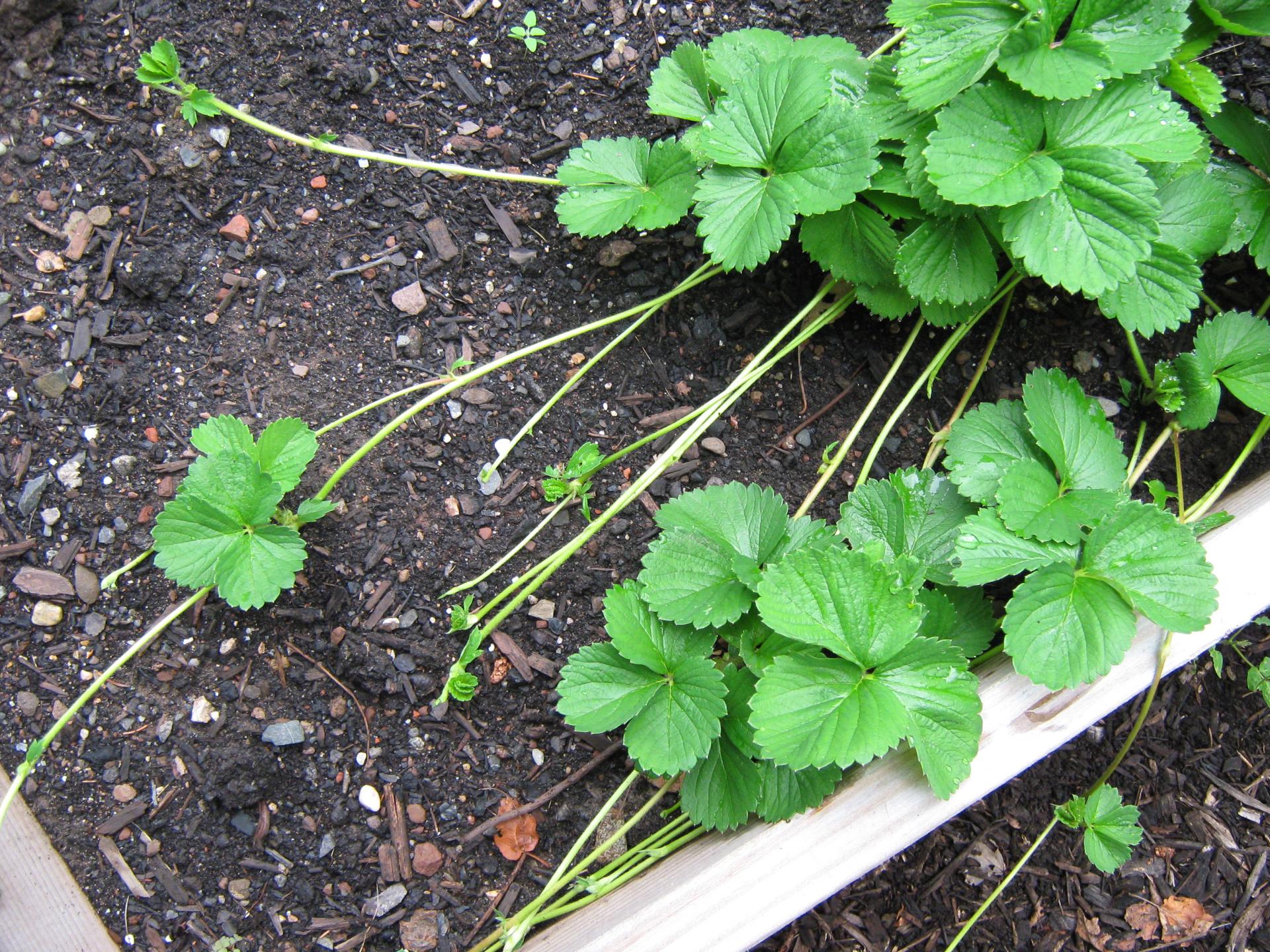
Care secrets
In order for the culture to quickly take root and delight the gardener with a bountiful harvest, certain growing conditions must be observed.
In the first 7 days, the culture is watered daily. When the plant has taken root, watering is carried out once a week. For 1 sq. m plantings consume about 10 liters of water. It is important to monitor the condition of the root soil. If it is very dry, the bush should be watered.
Mulching is carried out in March until the strawberries begin to bear fruit. The beds are covered with agrofibre. This allows you to prevent the appearance of weeds, prevent overheating of the soil, and significantly reduce the risk of fungal diseases.
Growing under plastic allows the grower to harvest a couple of weeks earlier. The culture is planted in the beds, over which the frame is installed. A film is attached to it. It is necessary to stretch the twine between the arcs, which will not allow the film to sag. It is important to set the material so that the rows of strawberries are well ventilated.
On warm days, at the time of flowering strawberries, the film should be removed so that the seedlings receive the necessary amount of sunlight.
Wintering features
During preparation for winter, the shrubs are cut off, leaving 2-3 leaves. The rows are mulched with spruce branches, peat or sawdust.

Diseases and pests of the variety
The variety is resistant to many fungal diseases.However, for the purpose of prevention, one should resort to the help of such drugs:
- Fundazol;
- Trichovit;
- "Phytodoctor".
The most common diseases of garden strawberries are:
- gray rot;
- brown spotting;
- powdery mildew;
- late blight.
- Late blight
- Brown spot
- Gray rot
The following pests are most dangerous for Khonya strawberries:
- whitefly;
- leaf beetle;
- aphid.
To prevent serious infection of the plant, it must be regularly inspected for rot spots. If found, the affected areas should be trimmed to prevent the spread of the disease to healthy parts of the crop.
When using fungicidal preparations, it should be remembered that pests form immunity to the components of the funds. That is why it is recommended to change them from time to time.
Gardeners reviews
The quality of the hybrid variety is confirmed by many reviews of summer residents who grow crops on their plots.
“We have been growing the Honey variety for about ten years. I like the unpretentiousness of the bushes and their resistance to diseases. The berries are large and very sweet. Most of the fruits, of course, are eaten fresh. But I try to preserve at least a little for the winter. "
“I grow Khonya strawberries on black soil - basically, we have the only soil like this. Fruiting perfectly, the variety is unpretentious to care. The first harvest is usually very good, the berries are large. Subsequent fruits become a little shallower, but this does not affect the impression of this wonderful variety. "
Honey strawberry has earned the trust of many gardeners. To obtain a rich harvest of sweet berries, you need to follow only a few growing rules. An attentive attitude to culture is the key to abundant fruiting.

